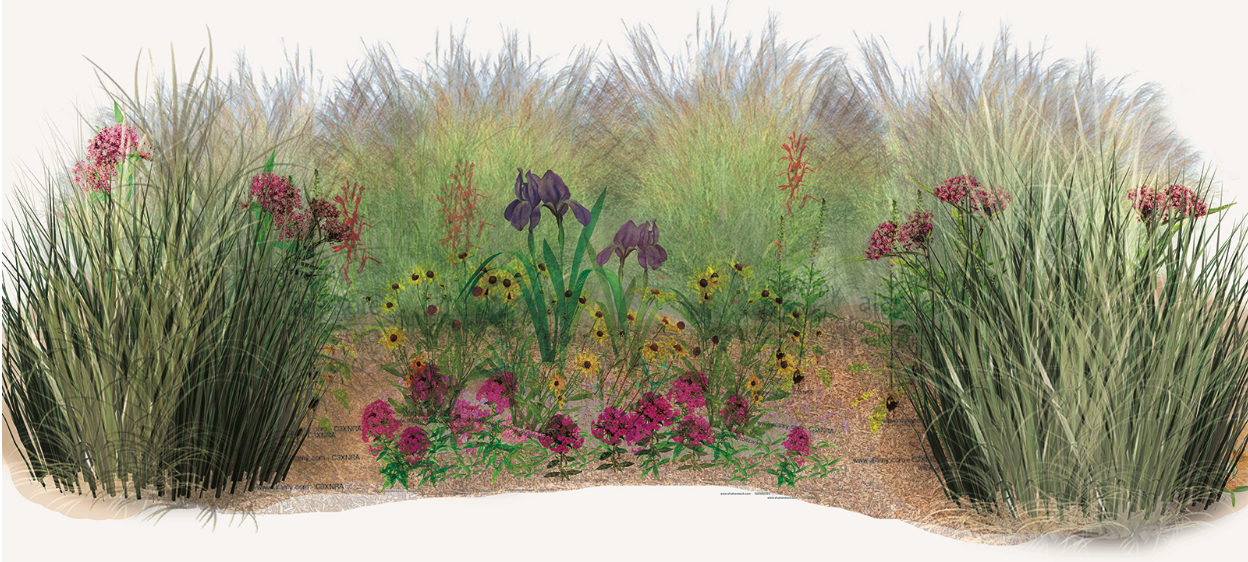
Branch Rickey Rain Garden (Bio-retention) Development on OWU Campus
Participants: Janelle Valdinger (City of Delaware, OWU), Dr. John Krygier (OWU Geography & Environment & Sustainability), Brad Stanton (City of Delaware), Perry Mickley (City of Delaware), Department of Parks and Recreation (City of Delaware), Department of Engineering (City of Delaware), Carolyn Cicerichi (City of Delaware)
Contact: Janelle Valdinger (JValdinger@delawareohio.net), John Krygier (jbkrygier@owu.edu)
This rain garden project is the outcome of an Environment & Sustainability program student project, in collaboration with the campus Sustainability Task Force, OWU Buildings & Grounds, and the City of Delaware.
Ohio Wesleyan University was established in 1842, in one building (Elliot Hall). Elliot was built near a sulfur spring, which flowed into the Delaware Run, near the earliest settlements in the area (upper green oval, below) The proposed rain garden is located along an unnamed stream just south of the sulfur spring and Delaware Run. The stream was buried sometime in the early 1900s. The area was developed as an athletic field for Ohio Wesleyan shortly afterward. Branch Rickey Arena was built on the site in 1976.
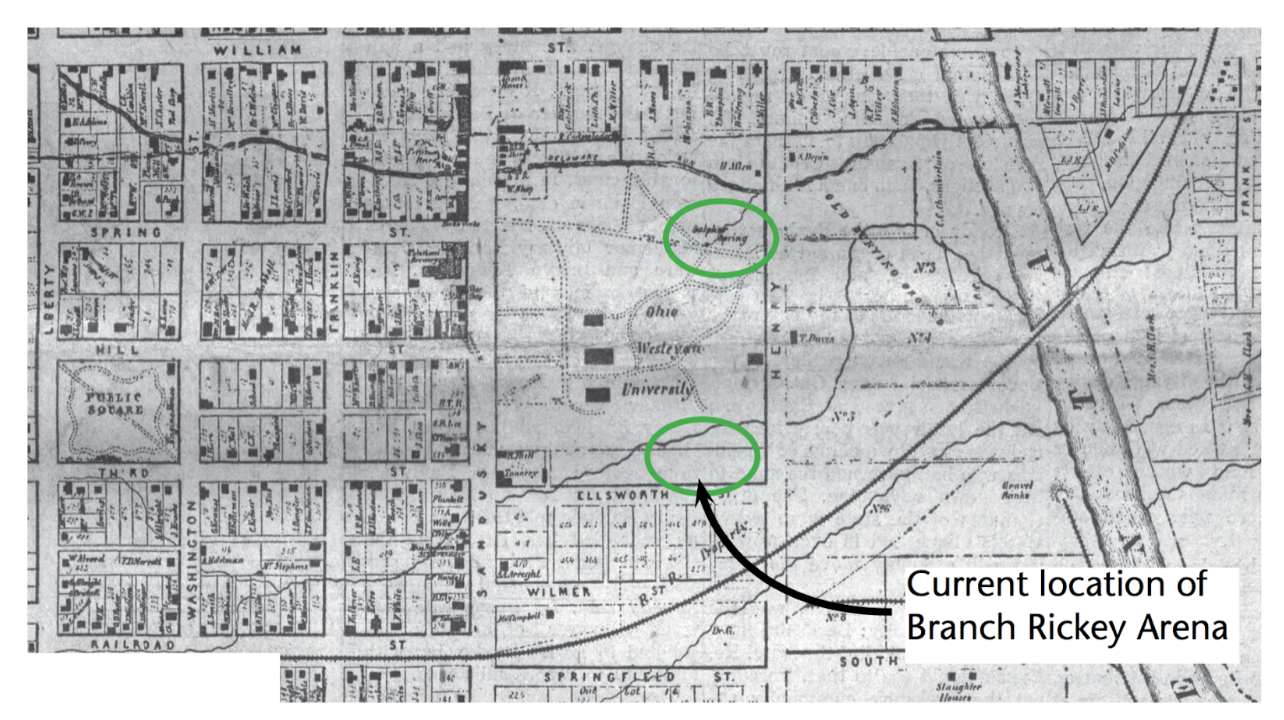
What is a Bio-Retention Cell? MS4 Permit/Storm-water Project: The City of Delaware works diligently to keep waterways healthy. One way this is achieved is through compliance with the Ohio Environmental Protection Agency’s (OEPA) National Pollutant Discharge Elimination System (NPDES) Program. The City has a permit with the OEPA for stormwater discharges, which are generated by runoff from land and impervious surfaces such as parking lots and rooftops. This bio-retention cell helps keep the City in compliance with its permit by treating stormwater pollutants before they reach streams, rivers, and other waterways.
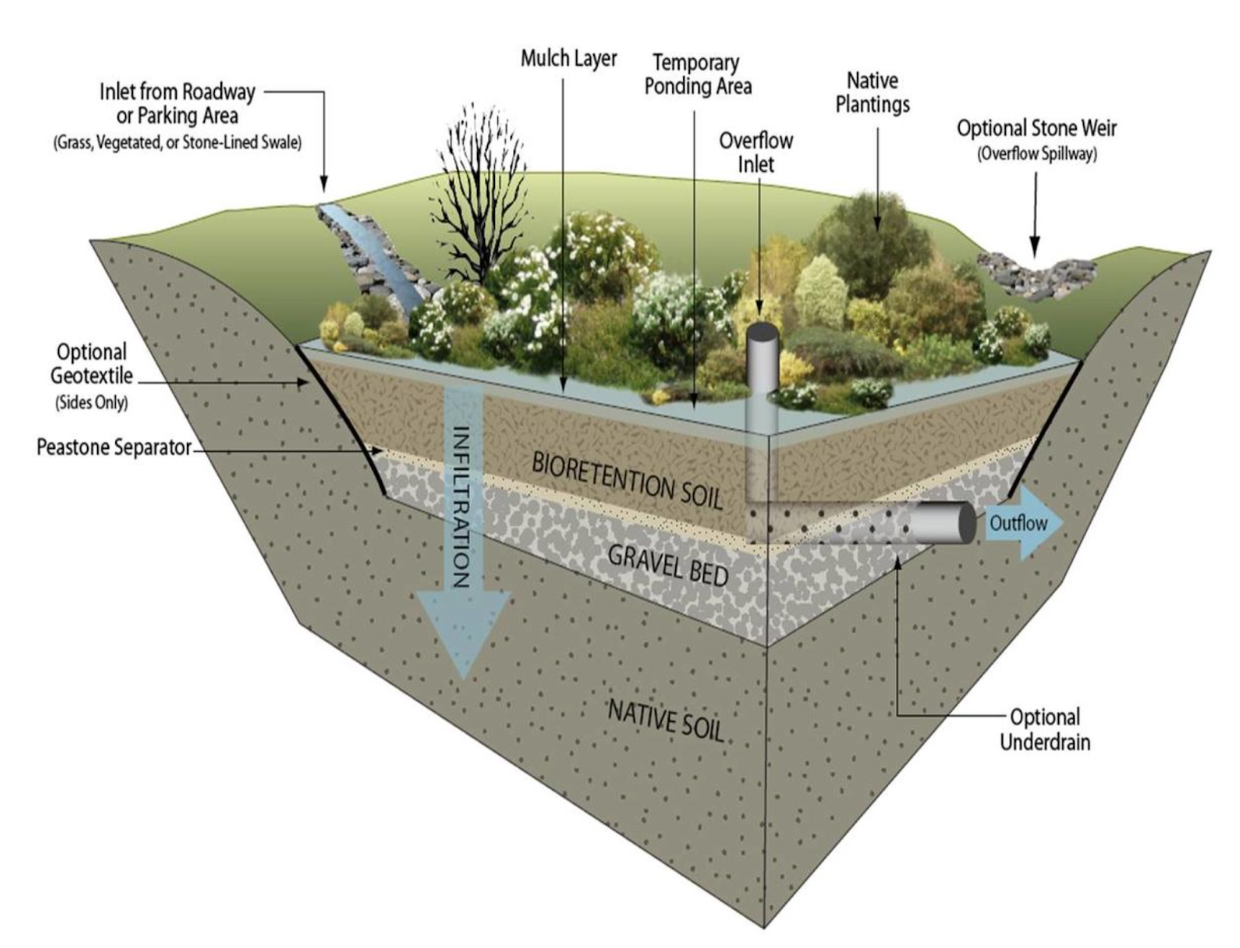
Rain gardens are designed and developed to improve water quality in nearby bodies of water to ensure rainwater becomes available for plants as groundwater rather than being sent through storm-water drains out to local tributaries. Rain gardens have the ability to reduce the amount of pollution reaching nearby streams and rivers by 30%. The purpose of this project is to design and implement two rain gardens located on the north side of Branch Rickey Arena/Gordon Field House.
Two storm basins have were located and inspected by the City of Delaware Department of Public Utilities as approved project sites. Two planning meetings took place with the Department of Engineering, Department of Parks and Recreation, and management to determine the design, layout, plant requirements, grading requirements, and labor needed for the said project. Calculations were made to determine the exact design layout.
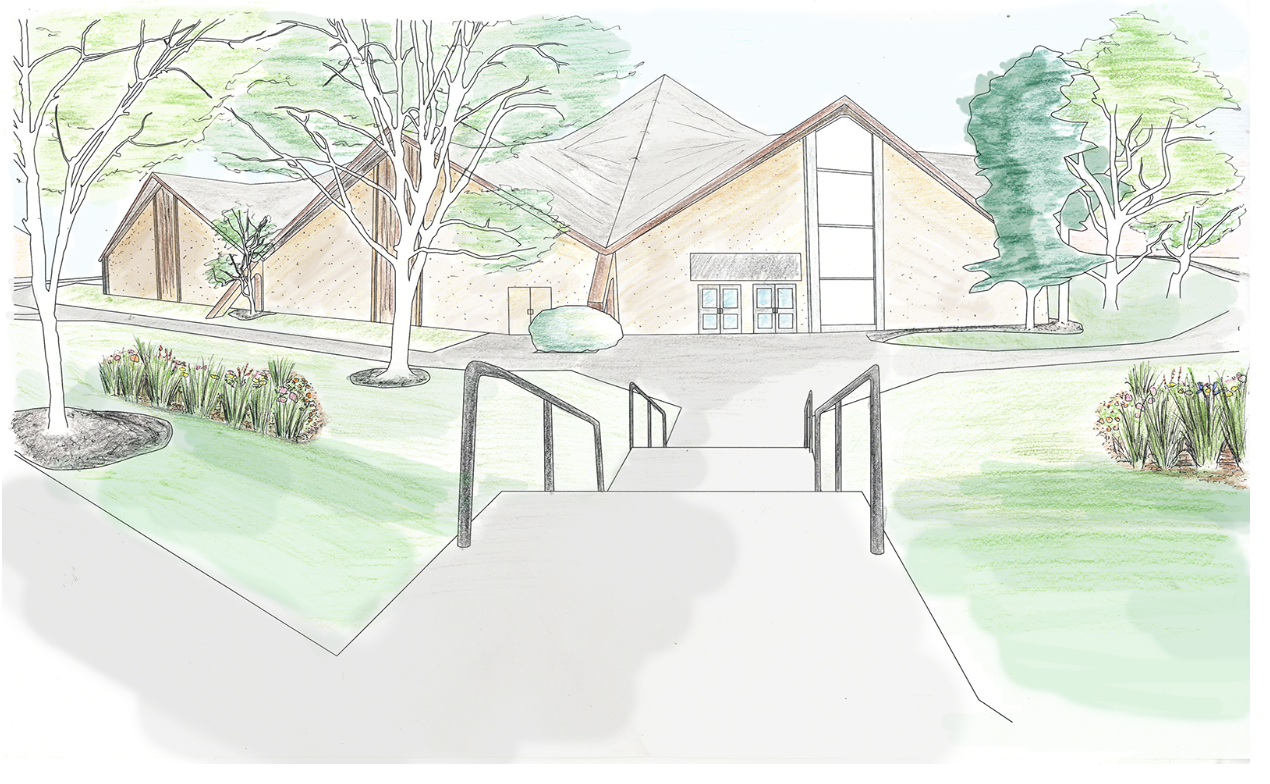
A quote from the City Arborist placed a $12,500 price tag on this project, and the funding was from a City of Delaware grant. OSU Landscape Architecture graduate student Jonathan Stechschulte provided the excellent drawings of the project, which OWU’s administration required before moving forward with the project.

Maintenance after the project has been completed will be shared by OWU’s Buildings & Grounds as well as being part of a semester and summer internship (focused on watershed issues). Interns will monitor, maintain, and report on the rain gardens, along with assisting our Watershed Coordinator and Department of Public Utilities employees with other tasks.
This project is part of a larger effort to create a more sustainable, and green infrastructure within the City of Delaware and especially on OWU’s campus. The possibility of this kind of project spreading to more locations on and around campus is high. Students can come back to this project year after year, choose a single storm basin or a collection of storm basins, create a design and implementation plan, and present it to the Department of Public Utilities. The Department of Public Utilities creates a capital improvement budget, along with a working budget every year to every five years, creating a constant allocation of funds for projects similar to this.
Building the bio-retention cell, Spring 2018:



 |
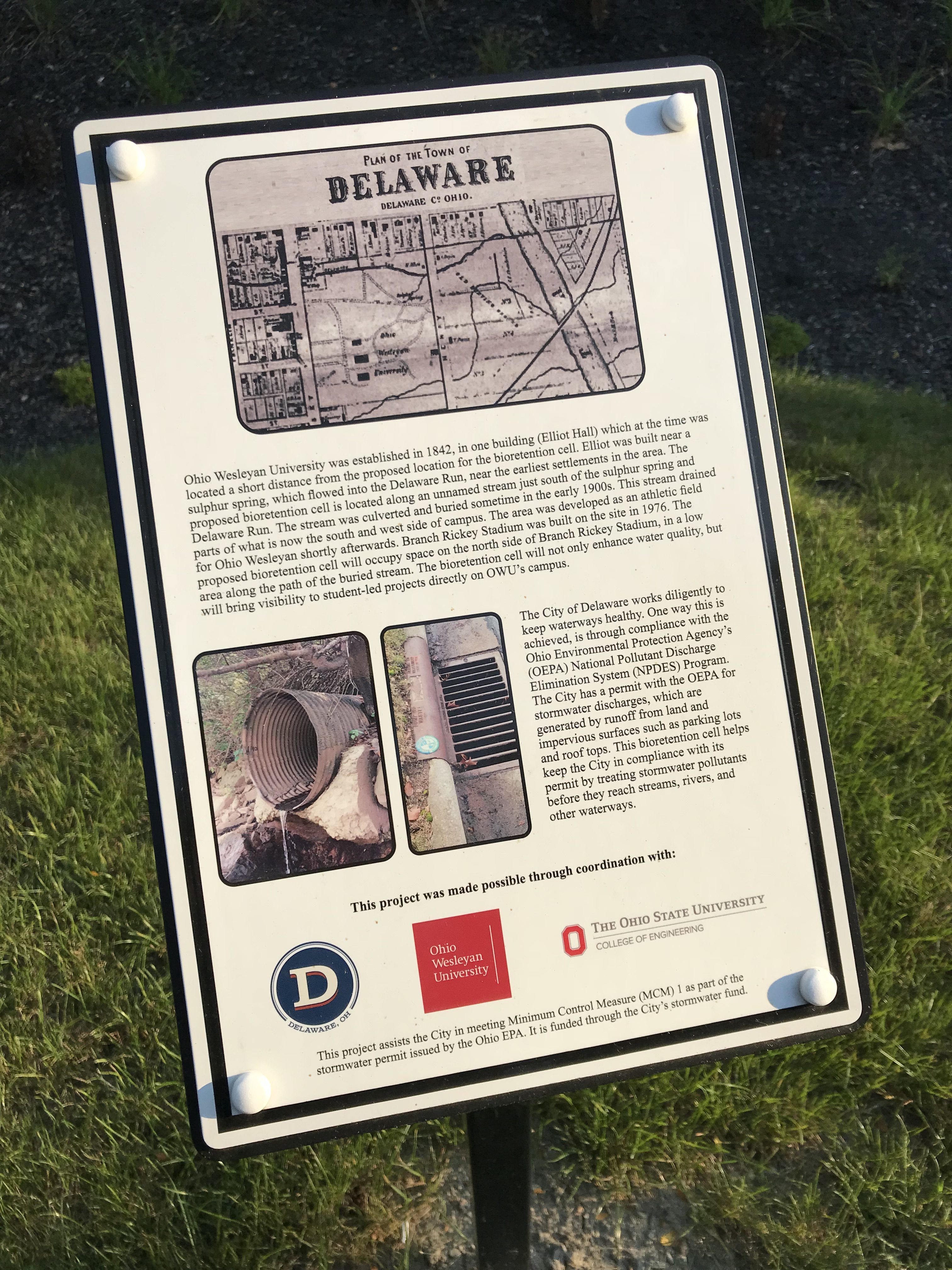 |
Two signs (above) describe the way bio-retention cells work, and the history of the location: a buried stream runs under/near both cells. See the old map of campus (above).
